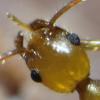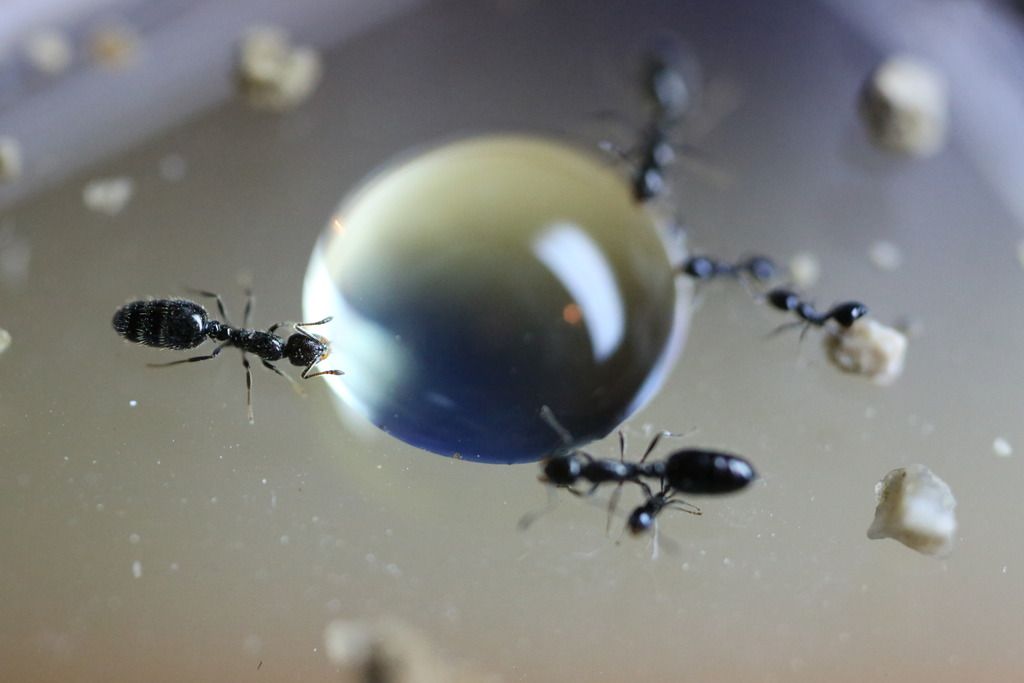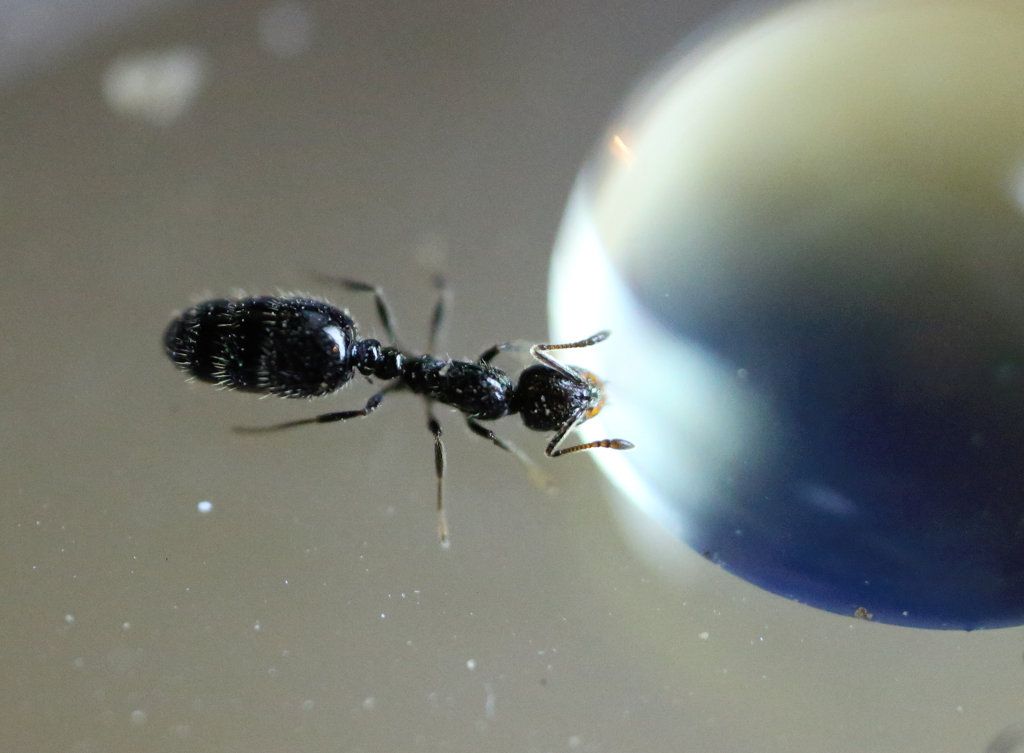I was working when I started to notice these ants all over a wall where I work. I started to see them swarm out of a rock area where argentine ants were also swarming in much greater numbers. Not having my jars I simply used a dixie cup and a plastic bag to keep them in. I was able to just blow them off the top of this rock and collect 40 or so queens and some workers. I went back later and collected another 40 queens. I have them in 2 different containers. They were Id'd as m.ergatogyna by Dr. trager on facebook but only by a crude picture, not this one.
Edited by Wamdar, July 20 2015 - 9:31 PM.



















